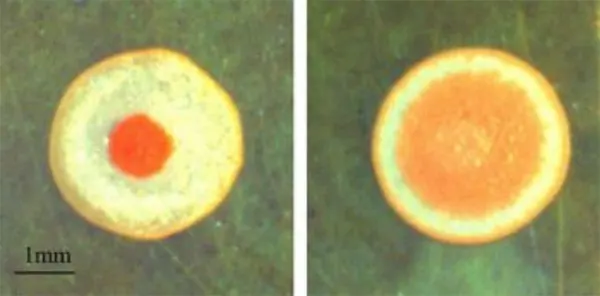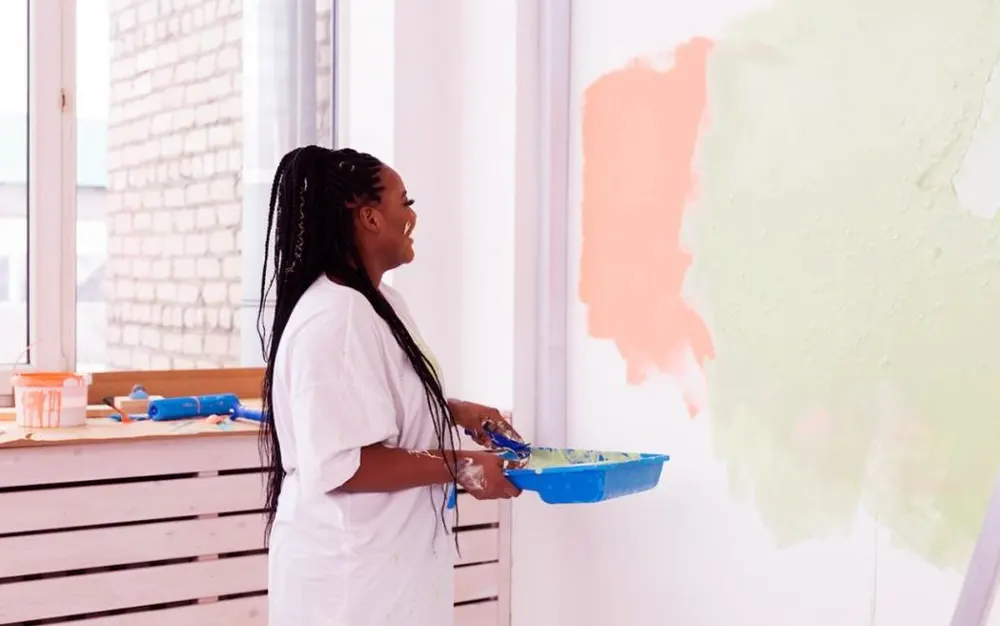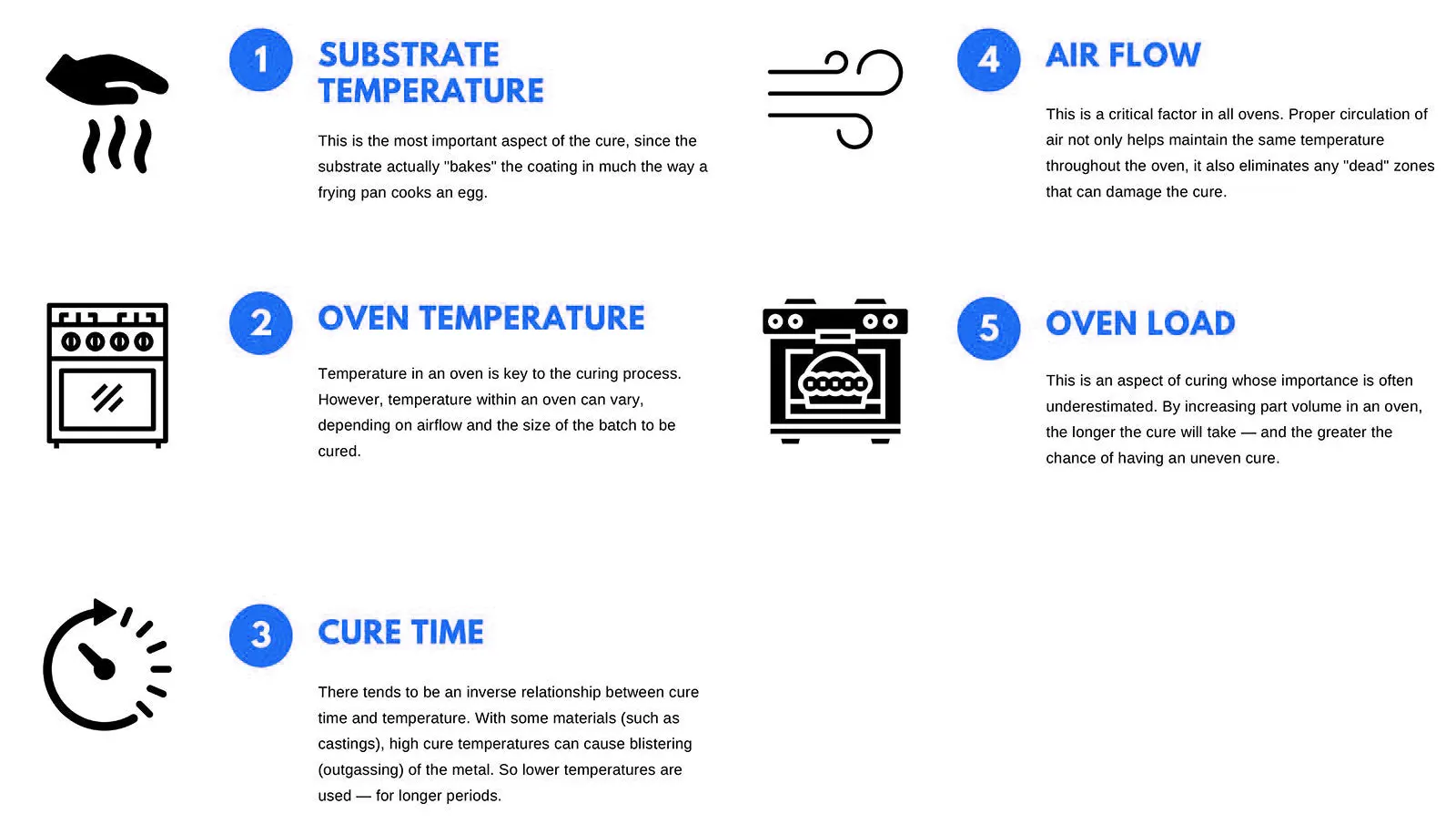The art of painting isn’t just about applying color – it’s also about understanding the science behind paint drying and curing. For your painting project, understanding the nuances of paint drying and curing is essential to achieving perfect results. This comprehensive guide covers everything you need to know – from the differences between paint drying and curing, to factors that affect drying time and the various new and advanced types of curing techniques. Whether you’re a seasoned pro or a DIY enthusiast, mastering these concepts will ensure you achieve professional-grade results on any project.
What Are Paint Drying and Curing?
When it comes to painting, it’s crucial to understand the difference between paint drying and paint curing. Both processes are essential to achieving a long-lasting, durable finish.
Definition of Paint Drying:
Paint drying is the initial stage that occurs shortly after painting. Picture this: You’ve just finished painting a room, and now you’re eagerly waiting for it to dry so you can admire your masterpiece without getting paint on your clothes. Paint drying is the evaporation of the solvents or water in the paint. As these liquids evaporate, the paint transforms from a wet, sticky substance to a dry layer. This process is usually quick, taking anywhere from a few minutes to a few hours depending on the type of paint and environmental conditions.
In more technical terms, drying is the process by which the liquid component of the paint (the solvent or water) evaporates, leaving behind solid particles that form a thin, dry layer. This is why a freshly painted wall feels dry to the touch relatively quickly.
Definition of Paint Curing:
While drying refers to the evaporation of the solvent (possibly water), curing is a more complex and critical process. Curing involves chemical reactions that occur within the paint to create a hard, durable coating. During the curing process, the paint undergoes a chemical reaction called polymerization. This means that the paint molecules link together to form a strong, solid film. This process can take much longer than drying—sometimes taking days or even weeks—depending on the type of paint and the conditions it’s in. Think of it like baking a cake. Just like a cake needs time in the oven to go from batter to a solid, delicious dessert, paint also needs time to fully cure and reach its maximum hardness and durability.
Understand the Difference Between Drying and Curing:
Now that we have a basic understanding of paint drying and curing, let’s explore the difference between drying and curing.
- Time Frame: Drying is a quick process that takes only a few hours to complete, while curing can take anywhere from a few days to a few weeks.
- Nature of the Process: Drying is a purely physical change involving the evaporation of a liquid. In contrast, curing is a chemical change in which paint molecules bond together to form a hardened surface.
- Feel and Durability: When solvents evaporate from a coat of paint, paint feels dry to the touch, but has not yet reached its full strength. Paint is truly “cured” when the coat of paint is completely hardened and fused to the wall. Only after curing does the paint reach its maximum durability and resistance to wear.
Understanding these differences is important because it affects how you treat your painted surface. For example, while your newly painted walls may feel dry, you must avoid harsh cleaning or placing items on them until the paint has fully cured. This patience ensures a longer-lasting, more resilient finish. In summary, understanding the difference between paint drying and curing can help you achieve better results and avoid common pitfalls in painting projects. So the next time you paint, remember: drying is the quick step, but curing is the key to a long-lasting, beautiful finish!
Watching paint drying.
We all know that any liquid (except pure water) will form a “fried egg”-like deposit after dripping. Paint is no exception, and paint really takes advantage of this to achieve a uniform coating. As we all know, paint is a mixture of multiple substances, including solvents (such as water), resins, pigments, and additives. Due to the different types of polymers in paint, various chemical reactions occur when the paint evaporates to achieve the desired effect.

Two patterns of paint drips after they’ve dried
The American Chemical Society (ACS) found that there are three phenomena in the drying process of paint in its experiments on paint drying:
- At the beginning, there is an opposing inward and outward flow of the liquid: from the hot substrate to the cooler top of the droplet.
- Then, the gelation of the paint suspension slows down the movement of the pigment and increases the viscosity of the liquid.
- Finally, the pigment completely dries and solidifies on the surface of the object.
The study found that drops with lower pigment concentrations or drops deposited on the lowest temperature surface of 86 degrees Fahrenheit will accumulate pigment molecules in the center to form a small dot similar to a “fried egg”. The drying pattern will become more uniform as the pigment increases and the temperature rises, and the color distribution is even throughout the circle. Therefore, we conclude that paint pigment content and ambient temperature affect color uniformity.
What Factors Affect Paint Drying Time?
We already know the importance of paint drying and curing in a successful painting project. As we dig deeper, let’s explore the top 7 factors that affect how quickly paint dries. So, let’s uncover the secrets behind paint drying time!

What Factors Affect Paint Drying Time
- Type and formulation of paint
The type of paint you use plays a big role in how quickly it dries. Water-based paints, such as acrylics and latex, typically dry faster because water evaporates faster than solvents. Oil-based paints, on the other hand, take longer to dry because they rely on the slower evaporation and oxidation process of solvents. Additionally, the formulation of the type of film-forming substance in the paint also affects drying time. Paints that contain fast-drying additives will obviously dry faster than those that don’t. - Coating thickness
The thicker the paint, the longer it takes to dry. Think of spreading butter on bread – the thicker the layer, the longer it takes to set. Thick layers of paint contain more solvent or water, which means it takes more time to evaporate. Applying multiple thin coats instead of one thick coat can help speed up the drying process. - Temperature
Temperature is a key factor in paint drying. Higher temperatures speed up the evaporation of water or solvents, which can reduce drying time. However, if the temperature is too high, the paint may dry too quickly, causing problems such as cracking or an uneven surface. For best drying results, the temperature should be kept at a moderate level, with temperatures between 70°F and 90°F being best for paint drying. - Ventilation
Good ventilation can significantly speed up the drying process. Fresh air helps carry away evaporated solvents or moisture, allowing the paint to dry faster. Open windows, use fans, or work in a well-ventilated area to improve airflow and reduce drying time.
- Humidity
The humidity level in the air can also affect how quickly the paint dries. High humidity means there is more moisture in the air, which slows the evaporation process and prolongs drying time. Conversely, low humidity speeds up evaporation, causing the paint to dry faster. Ideally, humidity should be kept between 40% and 70% when painting. - Pigment Concentration
The pigment concentration in the paint affects drying time. Paints with high pigment concentrations tend to dry slower because the pigments prevent the escape of solvents or water. This is why paints with high pigment content, such as dark red or blue, may take longer to dry compared to lighter colored paints. - Condition of the Surface Being Painted
The surface you are painting will also affect drying time. Porous surfaces, such as untreated wood or drywall, will quickly absorb paint and its solvents, which will reduce drying time. Non-porous surfaces, such as metal or glossy finishes, do not absorb paint as easily, which can slow down the drying process. Properly preparing and priming surfaces can help ensure an even and faster drying time.
Taking into account the top 7 factors that affect paint drying time can help you plan your painting project more effectively. By considering paint type, application thickness, temperature, ventilation, humidity, pigment concentration, and surface condition, you can ensure a smoother and faster drying process. With so many factors determining how paint dries, be sure to add some time into your drying estimate if you think any of these factors may affect your paint job. Happy painting!
What Are the Different Types of Paint Curing?
Paint curing is a critical step in ensuring your painted surface is durable and long-lasting. Understanding the intricacies of paint drying and curing can elevate your painting projects to a professional level. While we have already explored the factors that affect paint drying, it is now time to delve deeper into the various methods of paint curing. This will help you choose the right curing method based on the coatings material characteristics to speed up the process when selecting a paint project. Let’s explore the different types of paint curing and their specific processes.

Types of Paint Curing
Natural Curing
Natural curing is the most direct method, relying on the surrounding environment to promote the curing process. This category includes methods that rely on natural air and time to complete the curing, and is suitable for self-drying coatings such as volatile paints, air-drying paints, and curing agent-cured paints. The drying quality is greatly affected by environmental conditions.
- Solvent Evaporation Curing:This is the most basic form of curing, in which the solvent in the paint evaporates over time, leaving behind the solids of the paint and being attached to the surface of the painted object to form a dry solid coating film. This is similar to letting a wet surface dry naturally. The process is simple, but can be slow and depends on environmental conditions such as temperature and humidity.
- Air Oxidation Curing: Air oxidation curing involves a chemical reaction between the paint and oxygen in the air, using air convection to evaporate the solvent. The process forms a durable and hard film. Oil-based paints often undergo this type of curing. Imagine the paint “breathing” oxygen, becoming harder and tougher over time.
Heat Curing
Thermal curing uses heat to speed up the curing process. This method is particularly useful in industrial applications where time and efficiency are critical.
- Hot Air Circulation Curing: This method involves exposing the painted surface to a stream of hot air, which speeds up the curing process. Hot air convection provides uniform heating and high temperature control, which is suitable for high-quality coatings regardless of the shape and complexity of the workpiece, but the heating rate is slow, the thermal efficiency is low, and the equipment is relatively large. It’s like using a high-temperature hair dryer to quickly style a hairstyle.
- Hot Air and Radiation Curing: Combining hot air and radiation (such as infrared) provides an effective curing method. Hot air starts the curing process, and radiation ensures that the paint is cured evenly and thoroughly. It can also be dried with radiation first and then with hot air, taking advantage of the fast heating of radiation to heat the workpiece, and then using hot air convection to keep warm and ensure the drying quality. Think of it as a two-pronged approach to ensure perfect results.
- Thermoplastic Curing:Thermoplastic curing uses heat to melt and fuse paint particles, creating a smooth and resilient surface. This method is often used for powder coatings, which are applied as a dry powder and then heated to form a solid layer. Similar to baking a cake: the heat turns batter into a solid, delicious treat.
Radiation Curing
Radiation curing uses high-energy light to quickly cure the coating. This method is particularly fast and is often used in high-speed production environments.
- UV Curing: Ultraviolet (UV) curing is a process that uses energy to transform chemical formulations (paints, inks, and adhesives) from a liquid to a solid state. A rapid chemical reaction is triggered in the coating, causing it to harden almost instantly. This method is like giving your paint a high-energy electric shock to lock it in place. It’s fast and efficient, making it ideal for high-speed production lines.
- Infrared (IR) Curing: IR curing involves using infrared light to heat the paint, promoting rapid curing. Near-infrared technology allows powder coatings to be quickly worked and cured in seconds. This method is particularly useful for objects with complex shapes, where uniform heating is critical.
Microwave Curing
Microwave curing is an advanced method that uses microwave energy to generate heat in the paint. Under the action of microwaves, the material will produce physical phenomena such as heating and melting, and will also undergo chemical reactions to ensure deep and thorough solidification. This technology is highly efficient and can significantly reduce curing time.
Microwave curing uses microwave energy to excite water molecules in the paint, generating heat and accelerating the curing process. This method is efficient and can penetrate deep layers of the paint to ensure thorough curing.
Other Curing Methods
Other curing methods include a variety of specialized technologies that meet specific industrial needs and provide unique advantages for specific applications.
- Electron beam curing:Electron beam curing is a process that uses a high-energy electron beam generated by an electron accelerator as a radiation source to induce liquid oligomers to undergo cross-linking polymerization to quickly form a solid product. This method is often used for specialized coatings that require excellent durability.
- Ammonia curing:In ammonia curing, ammonia gas is introduced to react with certain resins in the coating to harden it. Ammonia vapor curing is a specialized drying method designed for ammonia-cured coatings that is very effective for specific applications where traditional curing methods are not suitable. Think of it as a chemical reaction experiment where the gas changes the properties of the coating.
- Induction heating curing:Induction heating curing is another new technology for rapid curing that uses electromagnetic fields to generate heat within the coating, curing from the inside out. This method is highly efficient and can be precisely controlled. Imagine it like using a high-tech device to heat coffee from the inside out to ensure an even temperature throughout.
Understanding the different types of coating curing methods can help you choose the right method for your project to ensure a long-lasting and professional coating effect. Whether it’s the simplicity of natural curing, the efficiency of heat and radiation curing, or the precision of specialized methods like electron beam and microwave curing, each method has its own unique advantages. By choosing the appropriate curing process, you can achieve the best results for your painted surface.
What Are Common Problems During Paint Drying and Curing?
After carefully selecting your paint, meticulously applying it, and anxiously waiting for it to dry, you may be dismayed to discover that something went wrong. Paint drying and curing may seem simple, but a variety of problems can occur that result in an imperfect finished product. Even more than just cosmetic issues, they can also compromise the durability and functionality of the painted surface. We’ve compiled some common problems that can occur during the drying and curing process, as well as solutions and preventive measures. Hopefully, we’ll help you deal with these flaws like a pro.
| Common Problems and Measures for Paint Drying & Curing | ||||
|---|---|---|---|---|
| Problem | Description | Cause | Solution | Prevention |
| Wrinkling | The paint film develops wrinkles or a crumpled texture as it dries. | Applying a thick coat, painting in high humidity or low temperatures. | Sand the surface smooth and repaint with thinner, even coats. | Apply paint in thin layers, allow adequate drying time between coats, and ensure proper environmental conditions. |
| Blistering | Bubbles form under the paint film, causing it to lift away from the surface. | Moisture trapped under the paint, painting over a dirty or oily surface, or exposure to excessive heat. | Remove blisters by sanding or scraping, ensure the surface is clean and dry before repainting. | Properly prepare the surface, avoid painting in direct sunlight or extreme heat, and use high-quality paint and primers. |
| Sagging or Running | The paint runs or sags, creating uneven coverage. | Applying paint too thickly, using a paint that is too thin, or painting in high humidity. | Sand the sagging areas, reapply paint in thinner coats. | Apply thin, even coats of paint, and avoid overloading the brush or roller. Ensure the paint has the correct viscosity. |
| Cracking | The paint film cracks and splits, often due to aging or improper application. | Applying a second coat before the first is dry, using incompatible paint layers, or painting over a cracked surface. | Remove loose paint, sand the area, and repaint with appropriate products. | Follow the recommended drying times between coats, and use paints and primers that are compatible. |
| Cissing | Small craters or fish eyes form on the surface, causing the paint to repel. | Contamination of the surface with oils, silicones, or dust. | Sand the surface smooth, clean thoroughly, and reapply paint. | Ensure the surface is clean, dry, and free of contaminants before painting. Use high-quality, clean brushes and rollers. |
| Chalking | A powdery residue forms on the paint surface, leading to fading and degradation. | Weathering and UV exposure breaking down the paint binder. | Wash the surface to remove chalking, repaint with a UV-resistant paint. | Use exterior paints with good UV resistance, and apply a protective clear coat if necessary. |
| Peeling | The paint film peels away from the surface in sheets. | Poor surface preparation, painting over damp or oily surfaces, or using low-quality paint. | Remove all peeling paint, clean the surface thoroughly, and repaint with high-quality products. | Ensure proper surface preparation, use quality paints and primers, and paint in suitable environmental conditions. |
| Bubbling | Small bubbles form under the paint film, similar to blistering but usually smaller. | Painting in high humidity, over a wet surface, or exposure to water shortly after application. | Sand down bubbles, allow the surface to dry completely, and repaint. | Avoid painting in high humidity or wet conditions, and ensure the surface is dry before painting. |
| Efflorescence | White, powdery deposits appear on the paint surface, typically on masonry. | Salts in the masonry dissolve in water and migrate to the surface as the water evaporates. | Clean off the deposits, treat the surface with a masonry sealer, and repaint. | Use a high-quality masonry sealer before painting, and ensure the surface is dry. |
Understanding and addressing common issues with the paint drying and curing process can save you time, money, and frustration. Whether it’s wrinkling, bubbling, or sagging, each problem has a specific cause, solution, and prevention method. By following these guidelines, you’re now better equipped to handle any painting challenges you encounter, ensuring that your painting projects are smooth, durable, and beautiful to look at.
In short, paint drying and curing are critical processes that determine the longevity and appearance of a painted surface. By understanding the factors that affect drying time and choosing the right curing method, you can avoid common pitfalls and ensure a long-lasting coating. Don’t forget to connect with the industry’s best coatings suppliers, service providers, and curing equipment manufacturers using the powerful, comprehensive search tools available at coatsdirectory.com. Use our platform to simplify your search and ensure your projects meet the highest standards of quality and performance.
Why do some paints take longer to dry?
Some paints take longer to dry because of differences in their formulation, thickness, and the temperature and humidity conditions of their environment. For example, oil-based paints dry more slowly than water-based paints because they rely on oxidation rather than evaporation. Additionally, thicker coats take longer to dry because they contain more solvents or water. High humidity or low temperatures can also extend drying times. In short, if the air is humid or cool, your paint will take more time to set.
What causes paint not to cure?
Paint may not cure properly if applied in adverse conditions such as high humidity, low temperatures, or if the surface is not properly prepared. Sometimes, applying too thickly or not leaving enough time between layers can prevent proper curing. Paint needs a specific environment to undergo chemical changes to become hard and durable – without that environment, it may remain sticky or soft.
If all of the above conditions are good and the paint still feels tacky and won’t dry, the problem is usually with the quality of the paint. You need to check that the paint was mixed correctly. If necessary, contact the paint supplier for advice.
Can you paint over wet paint?
Painting over wet paint is generally not a good idea. Painting over wet paint that has not completely dried can lead to undesirable effects such as bubbling, cracking, uneven coverage, streaking or clumping. And over time, the coating will peel or crack. The best approach is to patiently wait for each layer to completely dry before adding another. Painting over wet paint is like building a house on a shaky foundation – it will not hold up well in the long run.
How to keep paint brushes from drying out?
To prevent your paint brushes from drying out during your project, you can wrap them tightly in plastic wrap or aluminum foil, making sure no air can get in. You can even place the wrapped brushes in the refrigerator if you need to take a longer break. The key is to keep air away from the bristles so the paint doesn’t dry and harden on them. This trick is like putting leftovers in the fridge—they’ll stay fresh until you’re ready to use them again!

